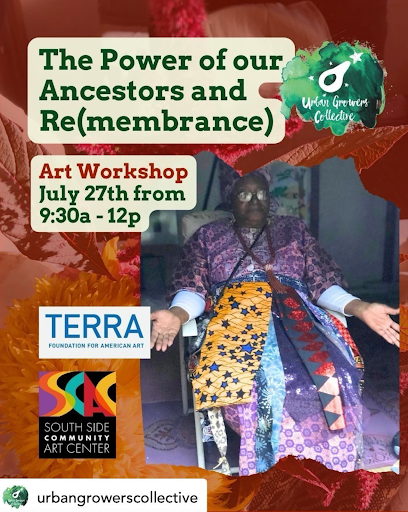From Jean Baptiste Point duSable, Ida B. Wells to Chairman Fred Hampton and Late Mayor Harold Washington and so many elders, we will share story, ritual and co-create a series of individual ancestral and community vessels from found and living objects and materials and also weave a community Agon or Ancestral garment that we will co-create with organic materials, fabric, clothing and organic materials.
Not required: Please feel free to bring an item of clothing, cloth, embellishments that evoke memory of your ancestors, relative or community loved one to contribute to this place based installation that will be tended by our collective community members.
Erika R. Allen shares her diverse sources of inspiration, ranging from her parents’ influence on her appreciation for the arts and farming, to artists like Jonathan Green and Joseph Cornell, and writers like bell hooks and Toni Morrison. She also discusses her connection to her ancestral roots and learning from elders within different cultural traditions.
This workshop is hosted in partnership with South Side Community Art Center (SSCAC), the oldest African American art center in the United States and a Chicago Historic Landmark. SSCAC showcases established artists and nurtures emerging creators. Through educational and artistic programs, exhibitions, talks, tours, and more, the center strives to engage, educate and connect community members to African American art and artists.
Supported by the Terra Foundation for American Art



